Some dogs take time to enjoy every bite of the food you serve them, while others will gobble up an entire bowl in a matter of seconds without even chewing the food. Certain breeds are known as fast eaters and should be supervised from an early age in order to prevent this problem.
Where do Corgis stand? Do Corgis eat fast?
Unfortunately, you cannot generalize things and say that all Corgis are slow eaters or vise versa. Some will take their time to chew every piece and enjoy their meal, and some will eat so fast that their bowl will be emptied in a blink of an eye. Your Corgi can grow to be either of the two – it depends on many factors but mostly on the upbringing.
What if your corgi is a fast eater? Is that dangerous?
Unfortunately, the answer is yes. Fast eating can even be life-threatening for dogs. First of all, there is a risk of choking. Dogs rarely die of choking but gagging on food creates a lot of discomfort and can often lead to vomiting. Secondly, if your Corgi eats too fast, there is a high chance of him or her developing a severe medical condition called bloat.
Of course, as a responsible owner, you should get informed about all the risks of fast eating as well as learn how you can help your beloved Corgi slow down and enjoy every meal. We will tackle all this, so stay with us to the very end!

Determining If Your Corgi Is a Fast Eater: How Fast Is Too Fast?
It is hard to determine how fast is too fast for your Corgi. You will have to be the judge of that.
If you notice your Corgi inhaling the food too often and having a lot of digestion issues after every meal – he or she probably has a problem and does not take enough time to chew on each bite.
When a dog eats too fast, he or she swallows big chunks of food as well as a lot of air. The dog’s body goes into overdrive trying to digest the food, but it hardly has any chance to finish the job properly. As a result, your dog can have gasses, vomit, or suffer from diarrhea or obstipation.

Is There A Simple Method To Determine Whether Your Dog Is A Fast Eater?
Sadly, no. There is no math formula you can apply to calculate whether your dog has a problem or not. However, every dedicated owner can spend a few minutes each day observing his or her dog while eating. Some things are hard to miss.
The first thing you should do is measure the time your dog needs to finish up its entire meal. For example, if your Corgi finishes half a cup of food in under 30 seconds, it is definitely too fast, and you need to react.
You can also listen to your dog eating. It might sound funny, but it can really help you determine the pace at which your pup is eating. If you hear a lot of chewing sounds and your dog eating the meal kibble by kibble – you’re safe.

What About Slow Eating? Can That Be An Issue As Well?
There is no such thing as eating too slowly. Even if your Corgi nibbles on his meal throughout the day, it is still ok. As long as your pet finishes the meal, you are good to go. You can say your dog has a problem only if he or she skips the meals, refuses to eat an entire day, or leaves most of its food behind.

What If Your Corgi Is a Fast Eater? What Are The Risks of Eating Fast?
If you have noticed that your Corgi is eating too fast, you need to act as soon as possible and do everything you can to stop such behavior. Why? Because it is very dangerous – sometimes even deadly!
Controlling your Corgi’s food intake can perhaps save his or her life. What is so life-threatening about something as trivial as fast eating?
If a Corgi eats too fast, he or she is at significant risk of developing a condition called Gastric Dilatation Volvulus, or, in more simple words, a “bloat”.

What Exactly Is Bloat?
Gastric dilatation-volvulus (GDV), also known as bloat, is a serious condition that occurs when your dog’s stomach or intestines expand or even twist within the abdomen. If the latter happens, your furry friend will most likely go into shock very rapidly, and his or her life will hang on a thread.
Why does this happen?
As we have already mentioned, dogs that eat very fast gulp down a lot of air along with their food, which results in the expansion of their stomach and intestines increasing the chances of bloat.
Sometimes, the bloat can occur when the dog’s stomach is filled with fluid too, but food and gas are more often the cause of all the problems. When a dog eats too much without any hurry, he or she can suffer from a so-called “food bloat”, which is a far less dangerous condition than the true GDV. However, it can sometimes be tough to tell the difference, and thus it is best to be on the safe side and take your dog to the vet whenever you notice he or she appears bloated.
Luckily for Corgis, large breeds of dogs are more prone to bloat, especially the deep-chested dogs.

What Are The Symptoms Of The Bloat? How To Diagnose This Condition With Certainty?
In the beginning, the symptoms will be tough to notice. In fact, they can be so subtle that the condition can easily stay unrecognized. Unfortunately, it becomes worse very quickly, and if you fail to take your dog to the vet in a timely manner, it can also be fatal.
For this reason, it is imperative to monitor your dog while he or she is eating, especially if you have already established that your pet is a fast eater. The first symptoms should occur in up to an hour after your pooch has finished eating his or her meal.
Here is a detailed list of all the signs you should look for:
- Anxiety and restlessness
- Excessive drooling
- Foaming at the mouth
- Swelling of the stomach
- Signs of pain or discomfort in the stomach area (whining and looking at the stomach)
- Your pet is trying to vomit, but nothing gets out (This is the most important sign!)
- Laying down for longer than usual
- Lethargy
If you notice any of the above-mentioned symptoms or have any suspicions that your dog is at risk, go to your veterinarian or an emergency vet clinic as soon as possible. Every minute counts, so be quick!
In order to diagnose GDV, a vet will perform a combination of physical examinations. The vet will most likely ask you if your dog has had an issue with unproductive vomiting, check for signs of abdominal distention, and do an x-ray.

What Are The Consequences Of The Bloat?
When your dog’s tiny body gets filled with too much food, fluids, or gasses, the pressure on other organs slowly builds up and can lead to the following problems:
- Your pet is experiencing difficulty breathing.
- The blood flow slows down, which can result in insufficient blood flow to the heart and stomach lining.
- A tear occurs in the wall of your dog’s stomach.
- The dog’s stomach “twists” and stops the blood flow to the heart and other organs sending your beloved pet into shock.
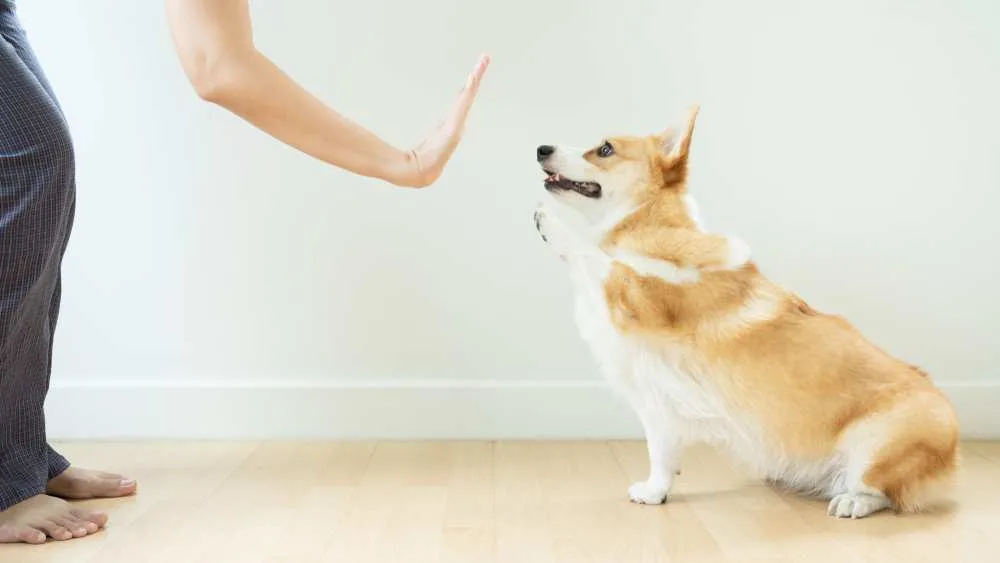
How Is Bloat Treated?
Sadly for all the dogs with this condition, there is no quick and easy solution. The only treatment option is abdominal surgery. The goal of the intervention is to empty the stomach and suture it back into its original position.

How Can You Prevent Bloat? What Are The Risk Factors?
There are various circumstances that can cause bloat. However, risky behavior significantly contributes to developing this life-threatening condition.
Here is what you should do to prevent bloat and perhaps even save your Corgi’s life:
- Divide your dog’s meal into smaller portions
- Try to get your dog to eat more slowly (There are various methods to do this that we will discuss later on, so stick with us!)
- Avoid taking your dog running or exercising prior to or right after eating.
- Make sure that your dog does not get too much to drink or eat.
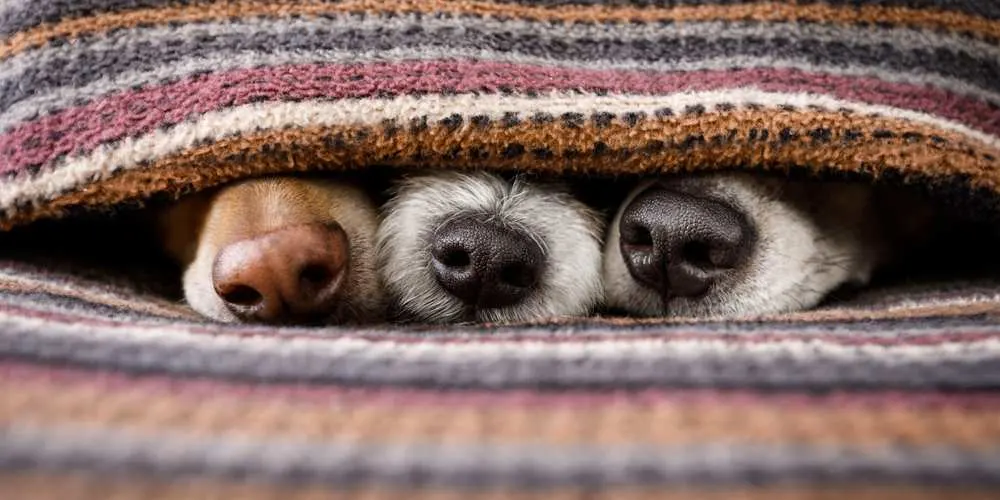
What Breeds Are At The Greatest Risk Of Developing Bloat? Is Corgi Breed At Risk Too?
All breeds are at risk – there are no exceptions. We have already revealed that large dogs with deep, broad, protruding chests are at a higher risk, though. The list of “risky” breeds is as follows:
- Labradors
- Dobermans
- Rottweilers
- St. Bernards
- Boxers
- Basset Hounds
- Greyhounds
- Great Danes
- Weimaraners
- German Shepherds
Unfortunately, smaller breed dogs are not spared. They can also suffer from bloat if they eat too fast. The following small breeds are at the highest risk:
- Dachshunds
- Bulldogs
- Italian Greyhounds
- French Bulldogs
Luckily for all the Corgi lovers, the Corgis are not on the list. Nevertheless, you need to take all the prevention measures because they can be affected.
As you could see for yourself, when we have discussed treatment, there is only one highly invasive and very costly solution. What is worse, the treatment of GDV carries a high death rate too. It is thus much better to work on developing an effective prevention strategy instead.
If you think your dog’s behavior is risky, you can perhaps turn to a method called Prophylactic gastropexy. It is a preventive suturing of the stomach in order to eliminate the risk of it twisting. The vets usually recommend this procedure to breeds at the highest risk for GDV, but it can be done on other dogs if they have close relatives that have had GDV.
If your Corgi is a female, and you believe gastropexy is indicated, it is best to do it at the same time the dog is spayed as that will save both time, money, and a lot of stress.
Read Also: Do Corgis Hiccup? Why Does Your Corgi Hiccup?

How To Slow Down Your Corgi’s Eating?
Corgis are energetic dogs that continuously seek attention and activities that they can enjoy. Being curious, too, it is hard to keep them in one place for long.
Moreover, Corgis love to eat. They often have weight issues for this very reason.
When you pair their high energy with their good appetite, you get a breed that can have a problem with fast eating. If you do not teach your Corgi good eating habits early on, you risk having to deal with all the issues we have listed so far.
So, what can you do if you notice your Corgi is starting to eat too fast? How to put a stop to such risky behavior?
First and foremost, introduce dietary changes we have discussed earlier, such as giving your dog a few smaller meals per day. Feeding dogs large kibble can sometimes help, too, since they need to be chewed. Your dog can also benefit from a low-fat diet because it will speed up the rate at which the stomach empties.
You can also turn to some of the following methods:
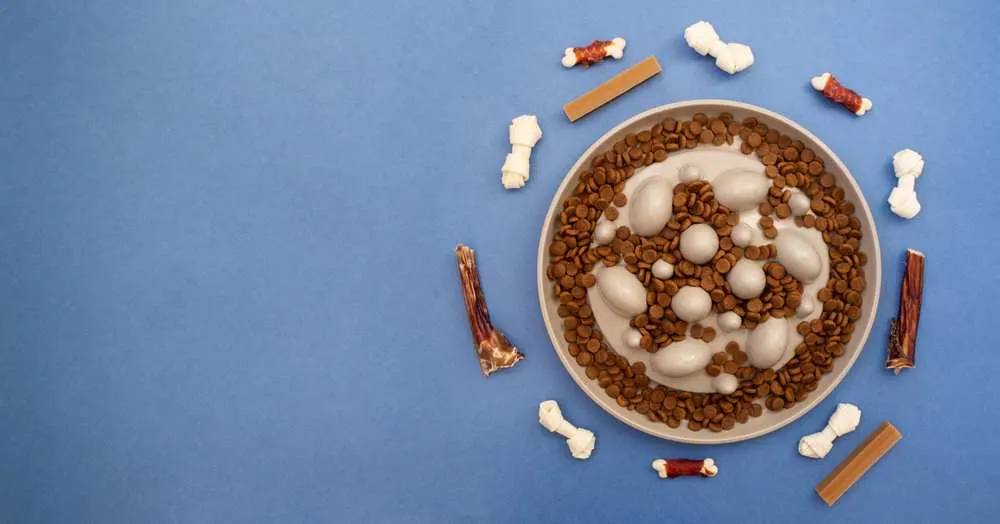
1. Introduce A Special Food Bowl
There are special food bowls you can find at most well-stocked pet stores designed to slow the rate at which your Corgi consumes the food. They are often called slow-feeder bowls, and there are many different brands you can choose from. Most of them do a great job, but we still recommend reading some reviews written by people who actually have Corgis and have had success with a particular bowl of this type.
What’s the trick with these bowls?
These bowls have finger-like extensions going up from their bottom. These “fingers” serve to prevent your Corgi from eating the entire meal in one single gulp.
A lot of dogs really enjoy these bowls because they are interactive. They provide mental stimulation your Corgi will benefit from.
You can try to make your own slow-feeder bowl too. It is easy!
Simply take a bowl one or two sizes larger than your Corgis’s feeding bowl and set it down flat. Next, place your pet’s regular dish into the large bowl upside down. Fill the gap between the two bowls with the dog’s food. Your Corgi will be able to reach the food, but he or she will be forced to eat more slowly.

2. Get Your Corgi Some Food Puzzle Toys
Food puzzle toys are similar to slow-feeding bowls and serve the same goal. They typically have all sorts of nooks and crannies that prevent your Corgi from taking large gulps of food. There are many options. For example, some food puzzles dispense food while your dog plays with them.
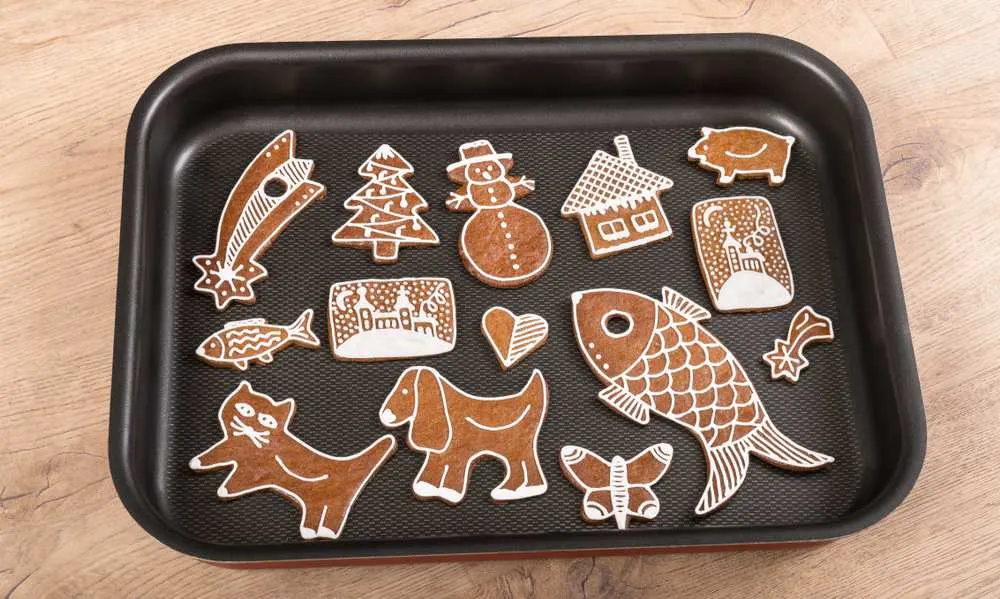
3. Ditch The Bowl And Use A Cookie Sheet Instead
If you spread your Corgi’s kibbles across a cookie sheet, you will make it almost impossible for him or her to gulp down everything at once. Your pet will have to take small bites and pick up small pieces with the tongue – which usually takes ages!
Alternatively, you can use a muffin pan and feel each cup with a little bit of food. In this way, you will break down your dog’s meal into smaller portions and eliminate excessive gulping.

4. Hand Feed Your Corgi
Corgis are affectionate dogs that thrive from your attention and love. They will enjoy being hand-fed. It is a time-consuming process but rewarding in so many ways, especially if your Corgi is a fast eater.
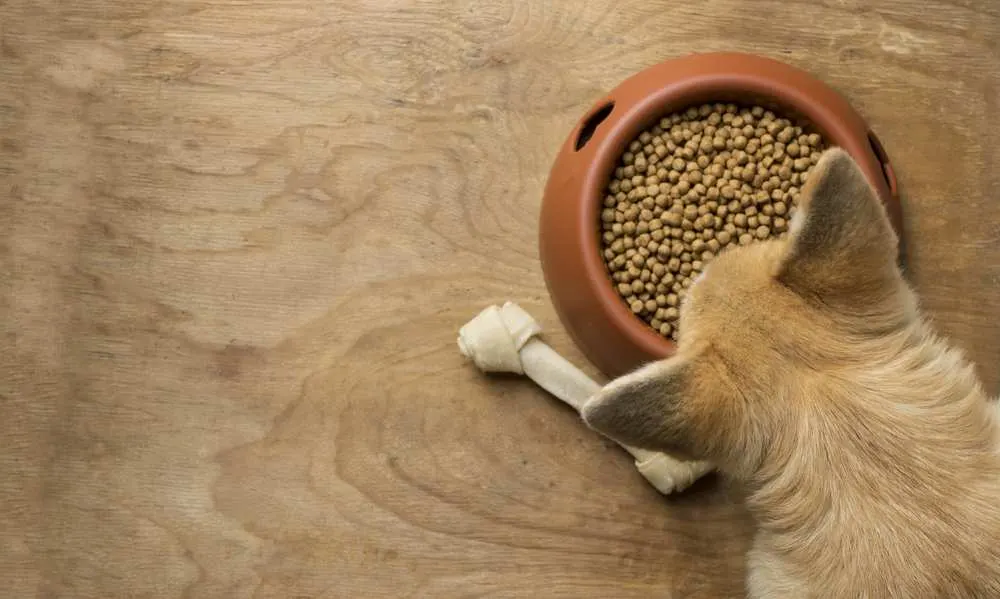
Final Words
Even though Corgis are not at high risk for GDV, you should still teach your pet to eat slowly and prevent overeating. If you notice your pooch has too big of an appetite and is in a hurry to satisfy it, create a prevention strategy and stick to it!

